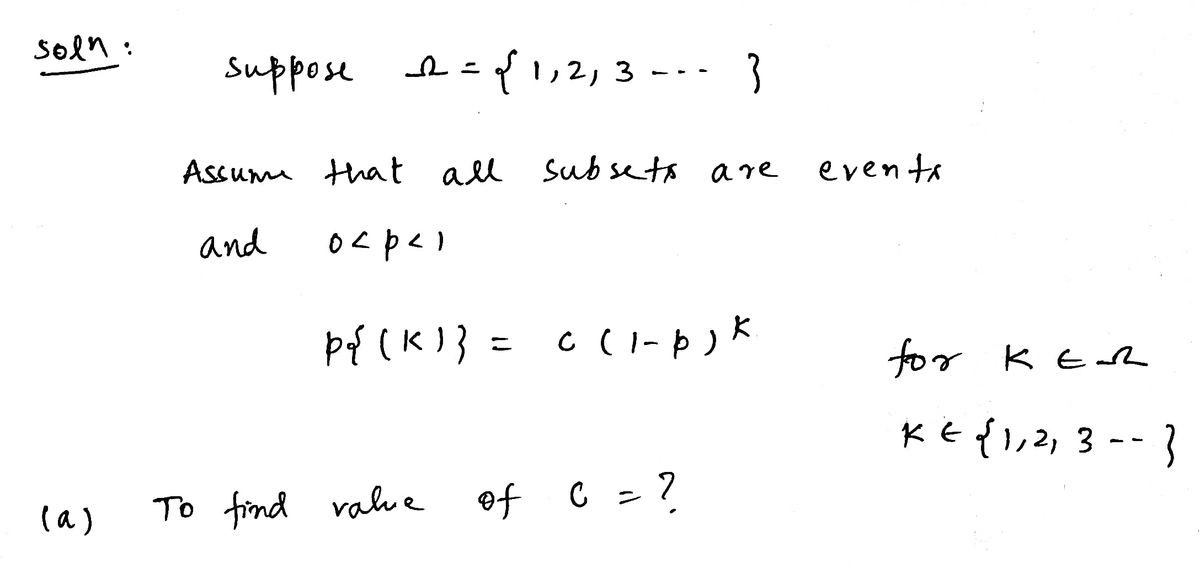(a) Determine c. (b) What is P({k}) now that you have determined c? (c) Compute P({k + 1, k + 2,...}) for k = 0, 1, 2,....
(a) Determine c. (b) What is P({k}) now that you have determined c? (c) Compute P({k + 1, k + 2,...}) for k = 0, 1, 2,....
A First Course in Probability (10th Edition)
10th Edition
ISBN:9780134753119
Author:Sheldon Ross
Publisher:Sheldon Ross
Chapter1: Combinatorial Analysis
Section: Chapter Questions
Problem 1.1P: a. How many different 7-place license plates are possible if the first 2 places are for letters and...
Related questions
Question

Transcribed Image Text:5. Suppose 2 = {1,2,3,...} Assume that all subsets are events and that 0 <
p<1. Suppose that
P({k}) = c(1 − p)k
for k € Ω.
(a) Determine c.
(b) What is P({k}) now that you have determined c?
(c) Compute P({k + 1, k + 2,...}) for k = 0, 1, 2, . . ..
Expert Solution
Step 1

Step by step
Solved in 4 steps with 3 images

Recommended textbooks for you

A First Course in Probability (10th Edition)
Probability
ISBN:
9780134753119
Author:
Sheldon Ross
Publisher:
PEARSON


A First Course in Probability (10th Edition)
Probability
ISBN:
9780134753119
Author:
Sheldon Ross
Publisher:
PEARSON
